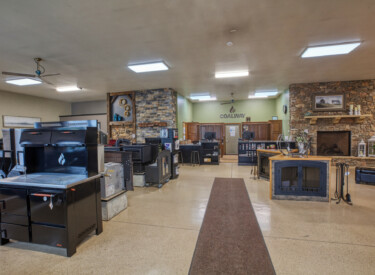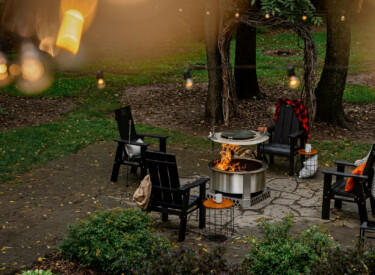The next two months of the year are the worst for chimney fires, especially if the temperature rises for a few days and then cools back down. Naturally, wood stoves get operated at a lower temperature when it warms up, causing creosote build-up in your chimney. When it cools off again, the stove gets cranked up, bringing the creosote up to ignition temperature (approx. 165°) and starting a chimney fire. To prevent this, you should open your damper and let your stove get hot every time you add wood, even when it is warmer outside. If you want less heat, simply add less wood. Of course, as always, it is very important to burn wood with a moisture content of 15% or less.
Following are a few steps you can take to help prevent a chimney fire, which can quickly lead to a house fire:
- Burn wood with a moisture content of 15% or less.
- Split your wood to a 5”-6” diameter for a hotter burn.
- Stoke your stove to a high temperature twice a day.
- Avoid a low, smoldering burn.
- Make sure you have the right chimney for your stove. (Call us for more information on this)
- Have a “Chimfex” chimney fire extinguisher on hand. (If you do get a chimney fire, this can extinguish it in seconds.)
Is your chimney safe enough to contain a chimney fire? If concerned, give us a call, we can scope it with a camera, for a thorough inspection. Don’t risk the safety of your house and your family!
A chimney should be able to withstand a chimney fire. It is something you try to avoid, but on average a chimney sees at least one chimney fire in its lifetime. If your chimney is not lined or installed properly, this can lead to a house fire quickly. A clay flue inside a brick chimney will most likely be broken in multiple areas after the first chimney fire, making the next fire even more dangerous for your home.
A clay flue is also very prone to moisture, especially if your chimney is not properly capped, which is common on brick chimneys. If you have moisture coming in at the top and saturating your chimney, it will certainly crack when it freezes. This will worsen with time and move down further in your chimney, again creating a very unsafe scenario in the event of a chimney fire. We are excited to announce that we now have a camera system for chimney inspections! This will help us know exactly what is going on inside your chimney. If you want to have an inspection done on your fireplace, just give us a call!




